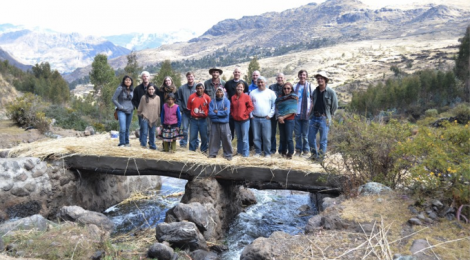
Teaching engineering students about social sustainability
By Brett Tempest, UNC Charlotte Civil and Environmental Engineering
An emerging field of study for engineers illuminates specialized methods for design and construction in developing areas. Engineers functioning as development workers respond to public health, infrastructure, energy, safety and shelter issues just as their counterparts in industrialized and developed areas. However, the work of the development engineer responds to an additional set of project demands related to risk, resource availability, appropriateness of technology, access and equity. Infrastructure projects can positively or negatively impact social capital in the region where the project is deployed. The potential of a project to either damage or strengthen social capital highlights a need for specialized education and training for students who choose to engage in development work during their careers so that they understand the notion of social sustainability.

After having their design approved by community leaders, students, the village president and the mayor of the local municipality complete a memorandum of understanding that outlines each party’s responsibilities to the project
Educating civil engineering students to respond to environmental sustainability issues builds upon a foundational knowledge of chemistry, biology and environmental engineering that is native to the curriculum of accredited civil engineering programs. Teaching students to respond to social sustainability issues through design or project deployment is significantly more difficult because the contextual basis for social sustainability is missing from their education. The UNC Charlotte Department of Civil and Environmental Engineering offers a multidisciplinary course in development work that features a field component that unfolds in the Andes region of Peru.
The course is facilitated by two Civil and Environmental Engineering faculty and features seminars delivered by experts in allied fields. The seminars cover topics in the thematic areas 1) participants, objectives and mechanisms of development, 2) design of appropriate technology for development 3) needs assessment and project planning 4) implementation and 5) ethics. When students arrive at their field project in a community called Paru Paru, they begin by working with community leaders to plan the project.
During the three years that UNCC students have visited Paru Paru, the projects have consisted of improving a network of pedestrian and vehicular bridges that enable transportation up and down a mountain. The village of Paru Paru is located at the end of a gravel and dirt road that is roughly 8 km long. The road is used on a regular basis to travel to and from the nearby city of Pisaq. In Pisaq the villagers can sell or trade their potatoes for other needed items and goods. The road is also used to transport construction materials to Paru Paru.
While the students are adept at responding to the technical challenges of constructing bridges, the task forces them learn to how to respond to the social and community aspects. An understanding of this comes from interactions with community leaders during which end-user feedback about design features is collected and incorporated. These concerns often surround issues of consensus, equity for all community members, safety, and aesthetics. Students learn about the system of faena, through which workers are assigned to the project by the village leadership as part of their annual responsibilities to the community. Technology transfer is another important issue that students consider. The project enables students to share their knowledge of concrete technology with local project participants. However, the students also learn to accept, incorporate and celebrate local expertise.
By completing the project, students become aware of how a project as seemingly innocuous as a pedestrian bridge can have significant social impacts to the community. Their sensitivity to social sustainability is increased by this awareness.
Image above: Students with their first bridge, completed in 2012. All photos courtesy of Brett Tempest


